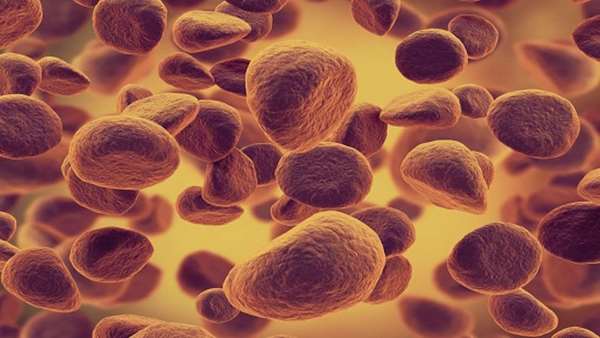Regulation of the Hoxb gene cluster maintains blood-forming cells and inhibits leukemia
Scientists have known for decades that the Hox family of transcription factors are key regulators in the formation of blood cells and the development of leukemia.
Scientists have known for decades that the Hox family of transcription factors are key regulators in the formation of blood cells and the development of leukemia. Exactly how this large family of genes, which are distributed in four separate chromosomal clusters named A through D, is regulated has been less clear. Now, new research from the Stowers Institute for Medical Research reveals that a DNA regulatory element within the Hoxb cluster globally mediates signals to the majority of Hoxb genes to control their expression in blood-forming stem cells.
"It"s like we found a general control that simultaneously turns the lights on and off in many rooms, rather than having a single switch that controls each individual room," says Stowers Investigator Linheng Li, PhD, who co-led the study along with Stowers Scientific Director and Investigator Robb Krumlauf, PhD. These findings also help explain why a particular form of leukemia resists treatment and points to potential new therapeutic avenues.
In mammals, the blood system contains a number of mature cell types—white blood cells, red blood cells, platelets—that arise from blood-forming, or hematopoietic, stem cells (HSCs). HSCs renew themselves and differentiate into other cells to replenish the body"s blood supply in a process called hematopoiesis. Hox genes, which are well known for their roles in establishing the body plan of developing organisms, are also important for HSCs to maintain their critical balancing act in the adult blood system, and have been implicated in the development of leukemia.
In an article published online May 3, 2018, in Cell Stem Cell, Li, Krumlauf, and co-authors including first author Pengxu Qian, PhD, second author Bony De Kumar, PhD, and other collaborators provide new details as to how Hox genes are regulated in HSCs. They report that a single cis-regulatory element, DERARE, works over a long range to control the majority of Hoxb genes in HSCs in a coordinated manner. The researchers found that the loss of the DERARE decreased Hoxb expression and altered the types of blood cells arising from HSCs, whereas "turning on" DERARE allowed Hoxb cluster gene expression in progenitor cells and increased the progression of leukemia.
Genes can be regulated by non-coding DNA sequences termed cis-regulatory sequences. These sequences get input from multiple types of molecules, such as transcription factors, histone modifiers, or various morphogens. The DERARE, or distal element RARE (retinoic acid response element), is a cis-regulatory element that responds to signals from the vitamin A derivative retinoic acid and determines the fate of HSCs.
Using human leukemia cell lines and mouse models, the Stowers researchers and collaborators have identified a mechanism for how the retinoid-sensitive DERARE maintains normal hematopoiesis and prevents acute myeloid leukemia (AML) by regulating Hoxb cluster genes in a methylation-dependent manner.
Methylation is the process of adding methyl groups to the DNA molecule, which can change the activity of the DNA segment. The researchers demonstrated that DNA methyltransferases mediate DNA methylation on DERARE, leading to reduced Hoxb cluster expression. AML patients with mutations in the DNA methyltransferase DNMT3A exhibit reduced DERARE methylation, elevated Hoxb expression, and adverse outcomes.
"In two human AML cell lines carrying a DNMT3A mutation, we used an adaptation of genome editing technology called dCas9-DNMT3A to specifically increase the DNA methylation on DERARE. This targeted methylation technique was able to reduce Hoxbcluster expression and alleviate the progression of leukemia," says Qian. "It is known that Hoxb cluster genes show a dramatic increase in expression in patients with DNMT3A-mutated AML. Our work provides mechanistic insights into the use of DNA methylation on the DERARE as a potential screening tool for therapeutic drugs that target DNMT3A-mutated AML, thus leading to the development of new drugs for treating AML, in which DNA methylation is abnormal."
Kumar adds, "This paper effectively shows that methylation status of DERARE in the middle of the Hoxb cluster acts as a key determinant to maintain normal hematopoiesis. Further, aberrant methylation patterns in this region are evident in the development of human leukemia. We have shown the importance of generating appropriate methylation patterns in the DERARE control element in normal hematopoiesis and in leukemia."
This study included substantial collaboration with Stowers support teams including Cytometry, Genomics, Molecular Biology, Histology, Imaging, Media Preparation, and Lab Animal Services.
Other Stowers authors include Xi C. He, MD, Christof Nolte, PhD, Madelaine Gogol, Youngwook Ahn, PhD, Shiyuan Chen, Zhenrui Li, John M. Perry, PhD, Deqing Hu, PhD, Fang Tao, PhD, Yingli Han, Kate Hall, Allison Peak, Ariel Paulson, Chongbei Zhao, PhD, Aparna Venkatraman, PhD, Andrew Box, Anoja Perera, Jeffrey S. Haug, Tari Parmely, and Hua Li, PhD.
Other collaborators include researchers from the University of Kansas Medical Center; Tianjin Medical University, China; Shanghai Jiao Tong University School of Medicine, China; and Sun Yat-Sen University, China.
This work was funded by the Stowers Institute for Medical Research and the American Society of Hematology Scholar Award.
Reference:https://medicalxpress.com/news/2018-05-hoxb-gene-cluster-blood-forming-cells.html





ارسال به دوستان